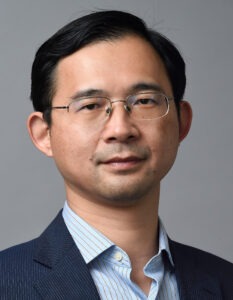A startup co-led by Ralph O’Connor Sustainable Energy Institute (ROSEI) core faculty Chao Wang received $3 million in seed funding from the Grantham Foundation for the Protection of the Environment, an early-stage investor in climate-related innovations. The funding will allow EDAC Labs, an innovator in using electrochemistry to clean the air, to scale up its unique carbon-removal technology.

Chao Wang
“This will help EDAC Labs tremendously,” said Wang, EDAC Labs’s chief technology officer and an associate professor of chemical and biomolecular engineering at the Whiting School of Engineering. “More than anything, we’re very excited to be working with Grantham. They have invested in a series of clean-energy tech companies, so they have a lot of connections in the energy industry and bring other knowledge to EDAC Labs. We’re viewing this as more than just a money investment.”
The funding will support the development of EDAC Labs’ electrosynthesizer (ES), which produces acid and base from brine. The base is used to react with carbon dioxide in the air to form carbonates. The acid is then added to the carbonate solution to release carbon dioxide. Salt is regenerated from this last step and recycled to the ES, forming a closed-loop system. Powered by renewable electricity, the EDACTM process uses only half the energy of conventional methods to capture carbon dioxide from air, said Wang.
“The actual chemistry being done is not overly complex: You can find it in science textbooks for middle or high school students,” he said. “We do everything at room temperature and atmospheric pressure; it is an easy process to replicate but it’s also very robust. Currently, we can capture kilograms of carbon dioxide per day, but we’ll be able to do tons soon.”
Extensive research supported by ROSEI’s carbon pillar has led to the development of this technology, which is now licensed by Johns Hopkins Technology Ventures (JHTV).
Wang hopes the technology being developed by EDAC will someday be used at Johns Hopkins University.
“One of my dreams with this technology is to build a system like it on the Homewood campus and make our campus carbon neutral,” Wang said. “One lesson from the haze that was caused by the Canadian wildfires earlier this year is, everyone in Baltimore shares the responsibility of addressing the challenge of climate change, including us at Hopkins. It’s a problem of our generation, not the next.”